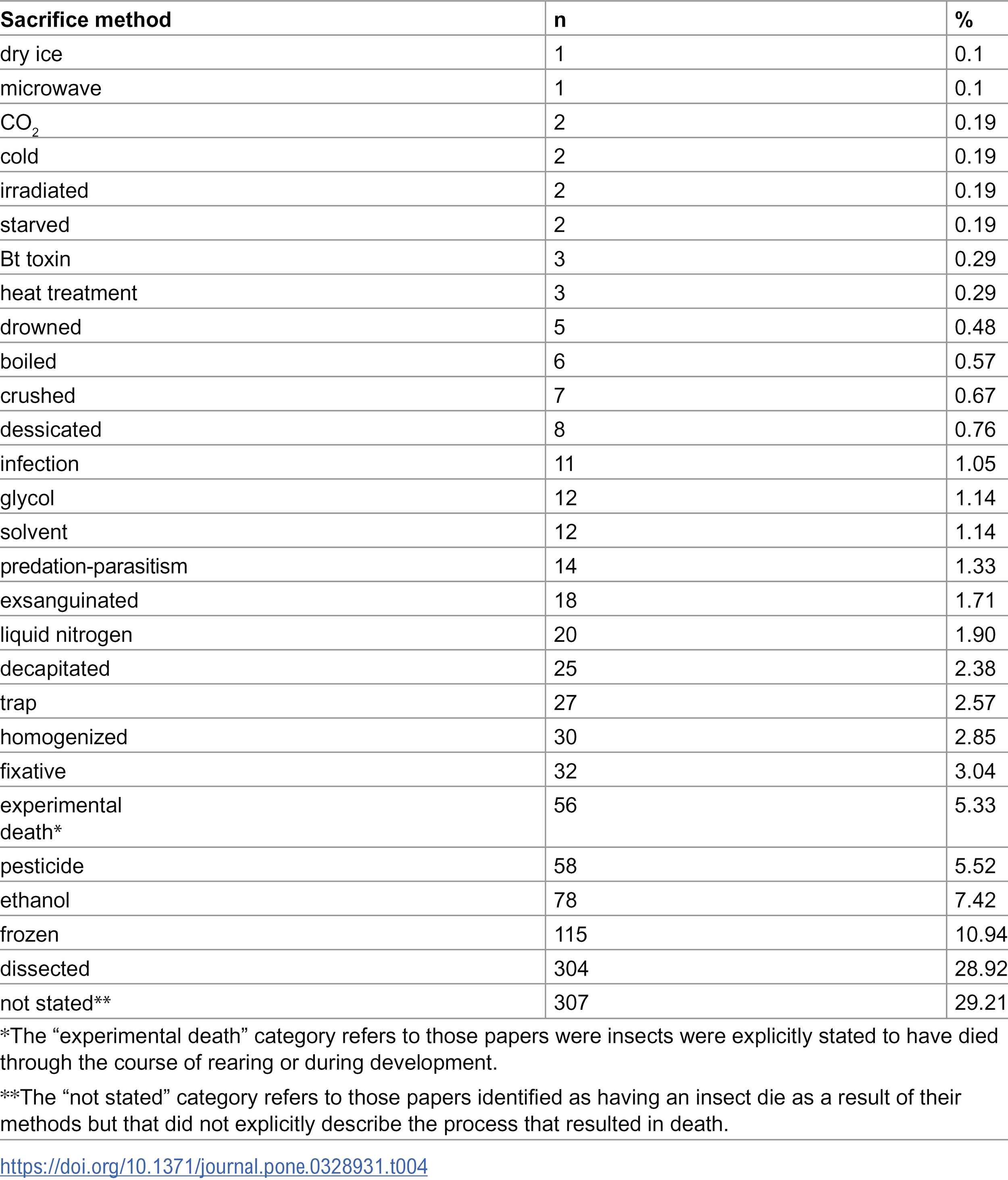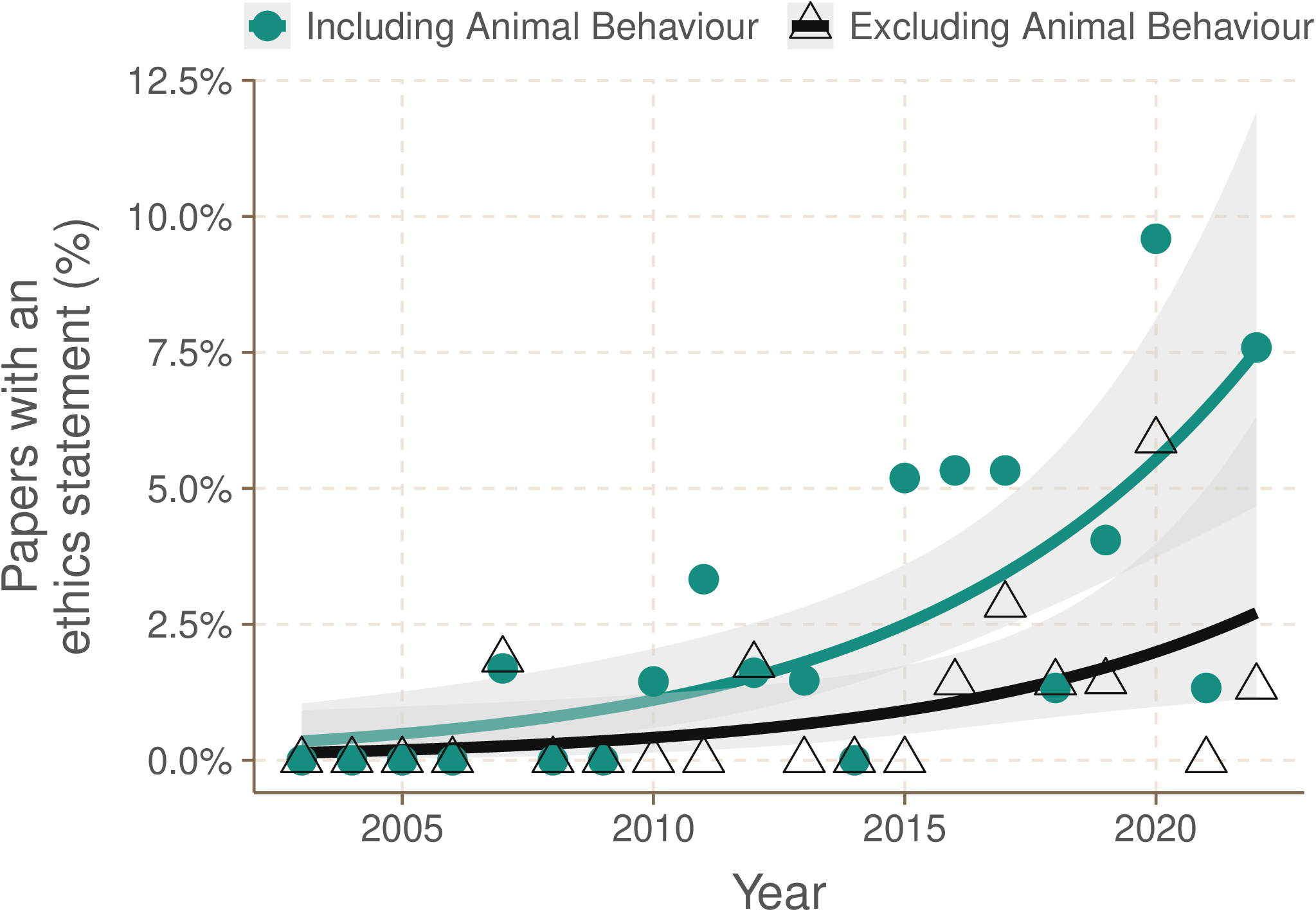Publication Alert: What do entomologists report about the ethical treatment of insects in research?
Identifying trends in reporting on the ethical treatment of insects in research (Perl et al. 2025; PLoS ONE)
Acknowledgement of Funding and Conflicts of Interest: CDP was employed by the Insect Welfare Research Society. This research was thus made possible thanks to the financial contributions of many donors enabling the work conducted by the Insect Welfare Research Society. None of the other authors were funded to work on this project. MB and BF report a relationship with the Insect Welfare Research Society that includes: board of advisors (unpaid).
Research is conducted on billions of insects a year around the world without ethical oversight; how do entomologists proceed when reporting on the treatment of their test subjects? This is increasingly important as public trust increasingly depends on the ethical conduct of invertebrate research (Brunt et al. 2022; Drinkwater et al. 2019).
In this paper, we reviewed a random sample of nearly 1,400 primary research articles published in 15 high-impact entomology journals over the last 20 years. We looked for data on if entomologists reported engaging in reduction (reducing the number of animals to the minimum required for their question of interest) and one specific refinement (using an anesthetic prior to invasive manipulation or death). We also assessed methods of sacrifice. Finally, we looked for evidence of explicit ethics statements focused on the humane treatment of research animals.
Sacrifice methods used with insects in the 1359 papers surveyed.
Major conclusions?
We found no reports of a priori efforts to reduce the number of animals used in any paper.
The most commonly reported method of death stated was dissection (24 - 29% depending on sampling methodology). Only 17% of these studies reported the use of an anesthetic or analgesic agent prior to dissection. Vivisection was thus reported in 20.56% of our sample. We found no trend towards increasing reports of anesthesia use over time in studies with dissection as the method of sacrifice.
Explicit ethics statements on the humane treatment of insects in research increased from 0% to 8% over the course of the study period, largely driven by the journal Animal Behaviour.
The percentage of studies that contained an ethics statement increased over time, largely driven by Animal Behaviour. There was a significant increase in the proportion of studies containing an ethics statement over time (green line; general linear model, quasibinomial family, t20,18 = 4.35, p < 0.001). Much of this increase in the use of ethics statements was driven by publications in Animal Behaviour, however even with this journal excluded there was still a significant increase from 0.00% in 2003 to 1.35% in 2022 in the proportion of studies containing an ethics statement in the other 14 journals (black line; general linear model, quasibinomial family, t20,18 = 2.40, p = 0.03).
Importantly, we consider it unlikely that 20.56% of all entomology studies involve vivisection; the inclusion of journals such as Journal of Experimental Biology, Journal of Insect Physiology, and Arthropod Structure and Development represent disciplines where dissections are more commonly practiced and thus may skew our overall sample of articles in relation to the wider entomological literature. So, while nearly 21% of studies in our sample include vivisection, we should not necessarily think nearly 21% of all entomological research reports the use of vivisection. Unfortunately, in many cases ‘cold’ or ‘chilling’ was used as the anesthetic agent, which is not currently recommended as best practice by invertebrate veterinarians (Wahltinez et al. 2023, Cooper 2011).
The increased trend of reporting on the ethical treatment of insects in Animal Behaviour is likely driven by editorial policy, which has included insects in the scope of welfare concern for the journal since 2004. The slow increase in ethics statements outside the journal in the rest of our sample indicates there may be some extremely gradual cultural shift in the field but that editorial policies play a larger role in shaping current reporting practices.
Finally, the publication provides a tool in the supplemental materials for any entomologists interested in reporting on the ethical treatment of insects in their research program; this tool can also help entomologists think through welfare-relevant variables a priori.
Want to read more news from the lab?







